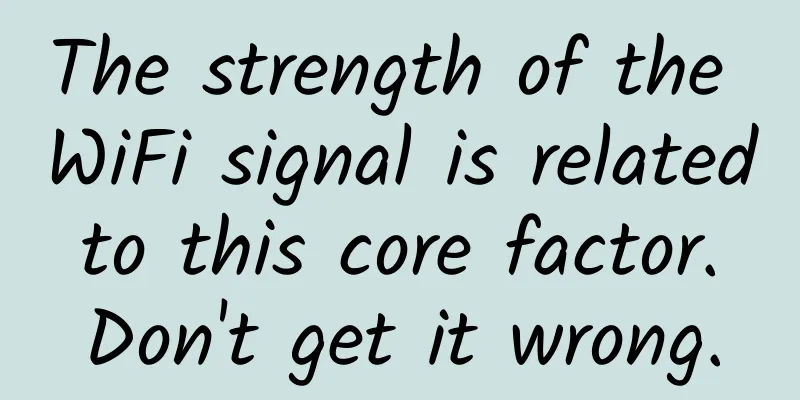The strength of the WiFi signal is related to this core factor. Don't get it wrong.

|
When buying a wireless router, you should buy one with large antennas and many antennas? I believe that many friends have this idea in their minds. Opening the wireless router sales page of the e-commerce website, we can find that wireless routers with 3 or more antennas basically occupy the top few hot-selling products. This also reflects the mentality of consumers when buying wireless routers now, "the more antennas, the better the signal." It is difficult to solve the problem of wireless signal at home simply by using a wireless router with multiple antennas. There are many factors that affect the strength of wireless signals.
The built-in antenna also has a strong signal The reason why wireless routers have multiple antennas is actually because of MIMO technology. Whether it is a product with 2 antennas or 3 antennas, it is to match the X*X MIMO mode. For example, the current mainstream single-band 300M and 867Mbps wireless routers must have a 2x2 MIMO mode, which means that two antennas are enough. If there are 3 or more antennas in a 2x2 MIMO product, it is the manufacturer's misleading of consumers. Moreover, with the popularity of dual-band wireless routers, some manufacturers have made independent external antennas for each frequency band, so it is not surprising that some wireless routers with 4 or 6 antennas have appeared. Transmission power directly affects the strength of wireless signals Importantly, the decisive factor for the quality of wireless router signals is the transmission power of the wireless router. All countries have regulations on the transmission power of wireless routers, which generally shall not exceed 100mW, that is, 20dBm (2.4GHz frequency band). So we can see that, in fact, according to national standards, the signal strength of the transmitter is fixed. No matter how many antennas there are, its transmission power will not change, and it will not affect the coverage of the wireless signal. In addition to the wireless router, we should also look for the cause from the receiving end. If the sensitivity of the wireless network card at the receiving end is not high, then the wireless Internet experience will be very poor. |
Recommend
Practicing ESG, Shengye continues to promote sustainable development of supply chain technology
ESG is an acronym for Environment, Society and Go...
Five steps organizations can take to maximize data center performance
When many organizations list the trends and issue...
Where is the way out for SDN?
SDN was born in 2006. It was a campus innovation ...
Five hot and four cooling trends in infrastructure and operations
The IT world is constantly changing, with new too...
How to continue writing “Extraordinary Jiangsu”?
[51CTO.com original article] On August 8, at the ...
5G is here, how far is 6G?
"In the 6G era, hundreds of high-definition ...
HostXen offers 50 yuan for new users, starting from 70 yuan per month for 6G memory in the United States/Singapore/Japan/Hong Kong
HostXen is a domestic hosting merchant founded in...
RAKsmart: San Jose dedicated server limited flash sale starting at $30/month, optional premium network or CN2 line
RAKsmart is a foreign hosting company operated by...
Yecao Cloud 618 promotion, Hong Kong CN2+BGP line VPS annual payment starts from 139 yuan
Yecaoyun has launched its 618 mid-year promotion,...
2022 Gartner Online Fraud Market Guide Report is officially released, Ruishu Information is once again selected as a representative manufacturer
In December 2022, Gartner®, a global authoritativ...
The love-hate relationship between video surveillance networks and IPv6 in the era of the Internet of Things
Among the three major layers of the Internet of T...
RAKsmart: 1-10Gbps bandwidth unlimited traffic server starting from $149/month, San Jose/Los Angeles data center
This month, we have shared RAKsmart's New Yea...
What are virtual networks and why they are here to stay
The computer networks we typically imagine involv...
OneTechCloud: 20% off on all VPS, US CN2 GIA&9929/Hong Kong CN2&CMI large bandwidth/high defense optional
OneTechCloud is offering a 10% discount on monthl...
SmartHost: 40% off large hard drive VPS promotion, starting at $4.17/month, 8 data centers to choose from
SmartHost has launched a promotion for Storage VP...









